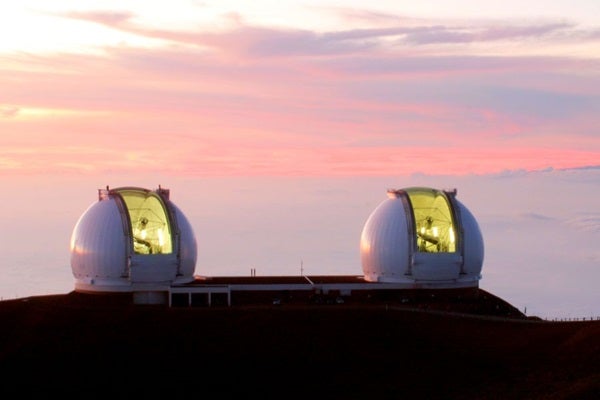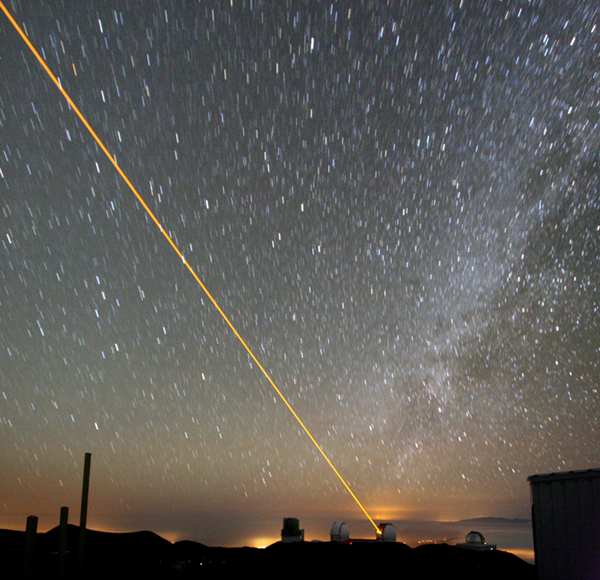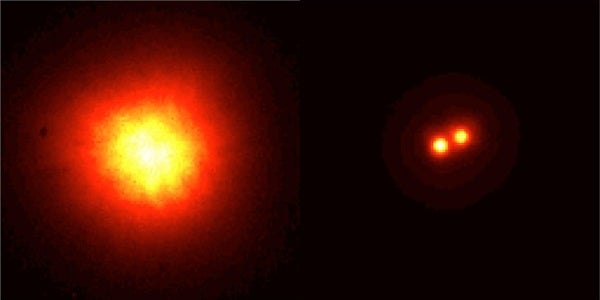Adaptive optics (AO) systems allow astronomers to push the boundaries of the viewing conditions available here on Earth. These advanced systems are hard at work on many major telescopes, including the twin 10-meter telescopes at the W.M. Keck Observatory atop Mauna Kea in Hawaii. And thanks to a recent National Science Foundation award, the Keck telescopes’ AO capabilities are about to get even better, boosting our ability to see farther and finer detail in the universe around us.
The award will provide funds to upgrade the AO system on the Keck II telescope, the second of the two massive telescopes built at the observatory. Keck II began operating in October 1996, just over three years after Keck I saw first light. Three years later, in 1999, Keck II became the world’s first large telescope to implement an AO system; in 2004, the observatory was the first to use a laser-generated guide star system with a large telescope. Now, Keck II will get a better real-time controller for its AO system, as well as a better camera to speed up its ability to compensate for atmospheric changes and deliver the clearest pictures possible.
Increasing the speed with which Keck II’s AO system can read turbulence in the atmosphere and translate that turbulence into corrective deformations of the mirror will improve the telescope’s ability to produce sharp pictures of ever fainter and more distant objects, increasing its astronomical reach. This reach will extend to projects such as the search for and characterization of planets around low-mass stars, tests of general relativity and black hole physics, and constraints of cosmological parameters such as dark matter, dark energy, and the expansion rate of the universe.
The upgrade should finish up in 2020, allowing Keck II to turn even clearer eyes to the sky and providing a foundation for perhaps even further improvements as AO systems continue to evolve.












